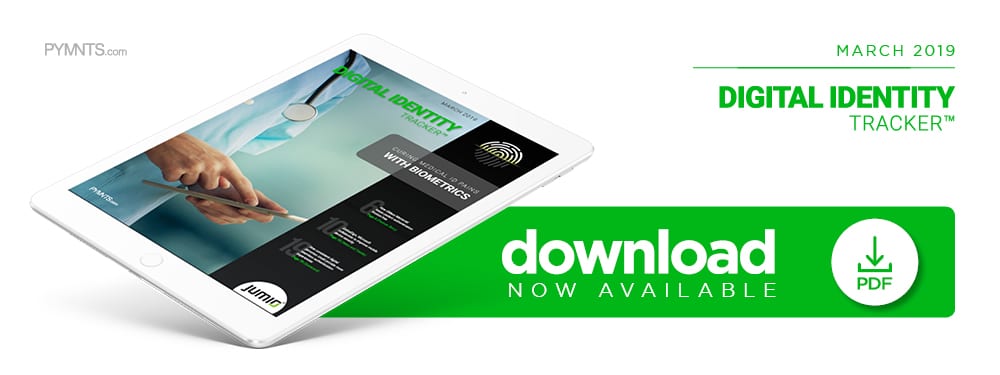Deep Dive: The Road To Seamless Multichannel Authentication

Consumers who are accessing multiple connected devices want to enjoy seamless authentication experiences across them — they want their data and online activities synchronized regardless of whether they’re logging on from laptops, tablets or smartphones. The following Deep Dive focuses on how digital personas could provide a more seamless digital experiences across different channels.
Most consumers view seamless, smooth digital experiences across multiple channels as a top priority. They want to use their fingerprints to access their bank accounts and check their balances on their phones. They also want to buy groceries through digital assistants like Alexa, and pay with saved cards while also receiving recommendations for better prices and other products.
These experiences risk creating friction if they cannot be synchronized between different channels, however. Customers using their laptops to log into their bank accounts may become frustrated if they can’t see recent smartphone transactions, for instance. In other scenarios, users who read emails on their desktops could become annoyed or confused if the same messages are marked as unread when they check their inboxes on different devices. In fact, recent research indicates 65 percent of consumers will get frustrated if they encounter inconsistent experiences across channels.
Having consistent experiences means consumers must be able to use and seamlessly validate their digital identities across multiple interfaces or channels — something that’s becoming all the more important as they turn to cloud-based solutions that synchronize data across different engagement points. The following Deep Dive examines authentication challenges that can hamstring seamless digital experiences, and how consumers’ digital personas evolve as they interact with merchants on multiple channels.
How Digital Personas Work
Users’ experiences become more consistent as they engage with various digital platforms, resulting in more accurate digital personas. For instance, users who begin watching Netflix shows on their TVs can stop and pick up where they left off after logging into the streaming platform on another device.
It’s not just over-the-top (OTT) services like Netflix that offer consistency. Today’s consumers can enjoy smooth experiences across rideshare platforms’ websites or mobile apps, and food delivery services can log their favorite meals, orders and payment methods while offering access through multiple channels. These experiences combine to establish users’ unique digital personas, building bigger pictures of their preferences.
Biometric authentication capabilities built into smartphones allow users to secure the information related to these personas, too. The FIDO Alliance, an industry consortium working to reduce password and username usage, is pursuing these types of solutions, aiming to replace traditional options with more advanced alternatives like biometrics, near-field communications and smart cards. Meanwhile, software firm Averon is working to link mobile phones’ SIM cards with users’ digital personas.
These digital identity enhancements also keep digital personas safe from hackers, cybercriminals and identity thieves. By using their devices and digital identity solutions daily, consumers build personas without even realizing it.
Global ID Movements
Connecting users’ digital identities with physical traits can do more than just provide seamless experiences across digital interfaces — it can allow millions worldwide to more easily access government benefits.
India’s digital identification program experiment could provide some early clues about what connecting digital information with biometric data could look like. The country’s national Aadhaar system has already issued unique 12-digit ID numbers to more than 1 billion residents since its launch in 2008, a figure that includes almost the entire Indian population. The information compiled in the system is based on users’ biometric and demographic data, and the service’s goal is to create unique digital identification documents linking users’ identities across businesses, banks and government agencies that issue benefits.
The latter use case is likely to be one of the most popular for digital personas on the global stage, allowing more residents to consistently and fluidly access benefits across channels. Several national ID programs have launched recently as alternatives to physical identification documents, with many incorporating biometrics. The United Nations and World Bank, for instance, have partnered on the ID4D campaign to provide government IDs to everyone across the globe by 2030.
Building Consistent Digital ID Experiences
The need for more seamless digital persona experiences is likely to increase as consumers become more connected. Ownership of and access to connected devices is set to increase significantly, according to recent market trends, with the average North American consumer projected to have access to 13 networked devices and the typical global user having access to four by 2021. As consumers add devices to their repertoires, they are more likely to be required to authenticate their identities, even with familiar businesses. Such frictions could disrupt transactions between merchants and returning customers using new devices.
A standard known as the Legal Entity Identifier (LEI) — created after the 2008 financial crisis — could see greater adoption to help both sides verify their identities. It is used to identify legal persons, organizations that are responsible for financial transactions or those who want to independently enter into legal agreements.
Other solutions could provide consistent digital persona experiences as more companies tap into the IoT ecosystem, including identity standards such as ISO, ITU-T and IEEE. These standards create common languages between businesses, end-users, regulators and organizations like the International Organization for Standardization.
Digital identity owners must demonstrate that they both have access to and are authorized to use their credentials — a task not achieved as easily as presenting a physical ID in person. But, as consistent digital persona experiences make it easier for identity holders to authenticate themselves across channels, the process will likely become as frictionless as producing documents like driver’s licenses or passports.

